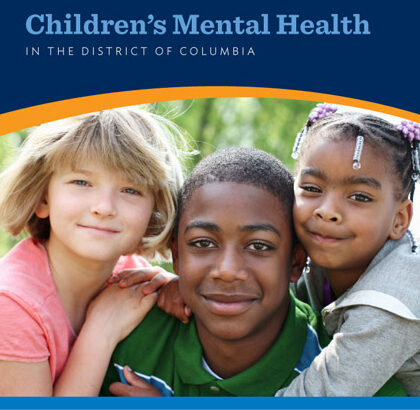Tracking DC’s Progress on Children’s Mental Health

2016 Update on Children’s Mental Health Progress | Download All Reports
Monitoring Progress
A 2-year-old girl whose mother is shot to death while holding her. A 12-year-old boy so behind in school he gets depressed and drops out. A homeless 18-year-old who faces daily anxiety about where he will sleep. These are just three of the many faces of children’s mental health in the District.
All DC children deserve mental health services that will allow them to learn in school, live with their families and thrive in our community.
Children’s Law Center advocates to increase the number of providers, improve funding and break down barriers that prevent children from getting the mental health care they need. Since 2012, we have released an annual report chronicling the District’s improvements and failures in meeting children’s mental health needs. Those updates are below.
2016 Update
Children’s Law Center issued its 2016 Update on Evaluating DC’s Progress in Meeting Children’s Mental Health Needs on May 5.
Report Shows Steady Progress

The report shows more children are being connected to mental health treatment than ever before:
- About 13,000 children received mental health services last year – a 55% increase since 2012.
- The progress is because the DC government increased oversight of its network of Medicaid managed-care organizations that provide health care to the majority of low-income children in DC.
- These healthcare agencies have more than doubled their per-child spending on mental health over five years.
DC is also getting creative about how to meet children’s mental health needs despite a nation-wide shortage of child psychiatrists.
How? By giving pediatricians the tools to fill the gap.
DC has trained pediatricians to identify mental health issues and incentivized them to screen more children, thanks to changes in Medicaid billing. And the new DC-MAP program gives pediatricians access to an on-call network of mental health experts – allowing pediatric practices to treat low-level mental health needs.
Taken together, these steps are moving DC’s mental health system in the right direction for children.
But Gaps Remain
Connecting more children to services, improving timeliness and addressing quality are critical areas where the DC government needs to improve.
DC’s leading mental health agency – the DC Department of Behavioral Health – estimates about 20,000 low-income children are likely to have a diagnosable mental health issue that requires treatment in DC. The government is only reaching 13,000 today. That’s a large gap.
And the DC government’s own reporting shows most children still wait far too long for treatment and the overall quality of services is poor.
Children’s Law Center’s 2016 report shows that the Mayor and DC’s agencies providing mental health services have much more work to do to achieve the goal of serving all children with mental health needs. But progress to date proves we can get there.
Read the Reports
For more information, you can access Children’s Law Center’s reports here:
- Read our 2016 Update: Evaluating DC’s Progress in Meeting Children’s Mental Health Needs
- Read our 2015 Children’s Mental Health Report Card
- Read our 2014 Children’s Mental Health Report Card
- Read our 2013 Children’s Mental Health Report Card
- Read our 2012 Report: Improving the Children’s Mental Health System